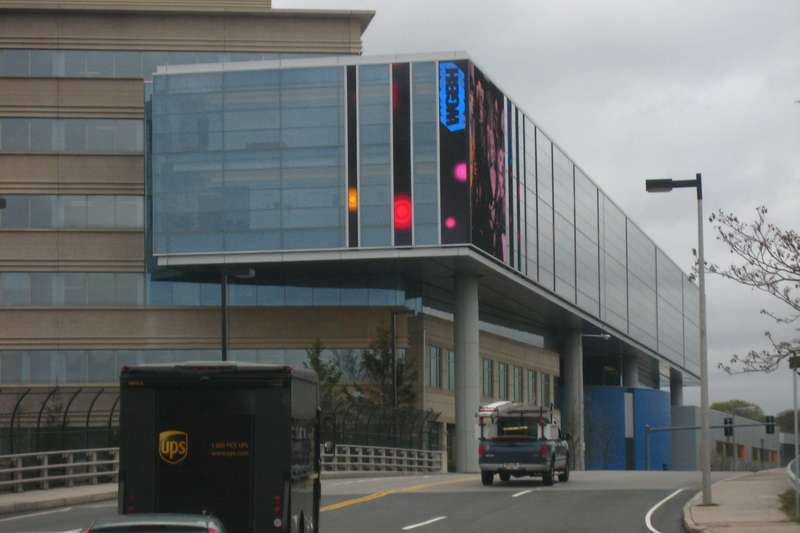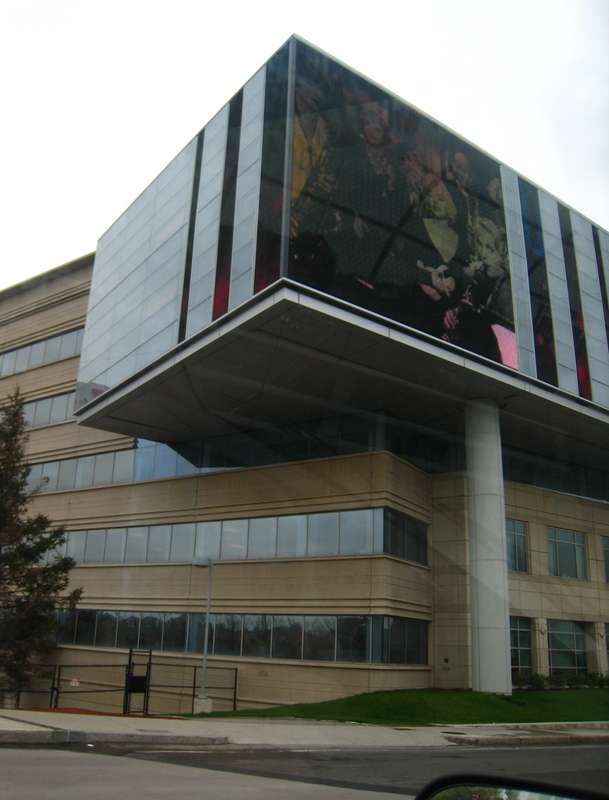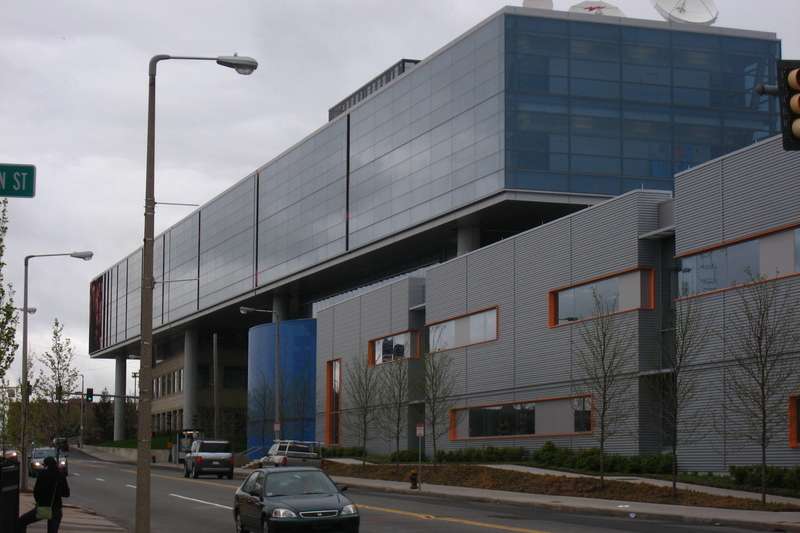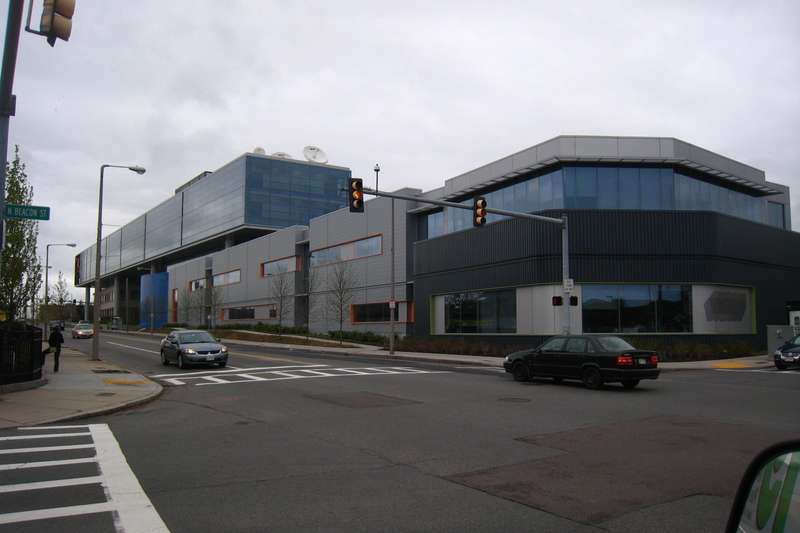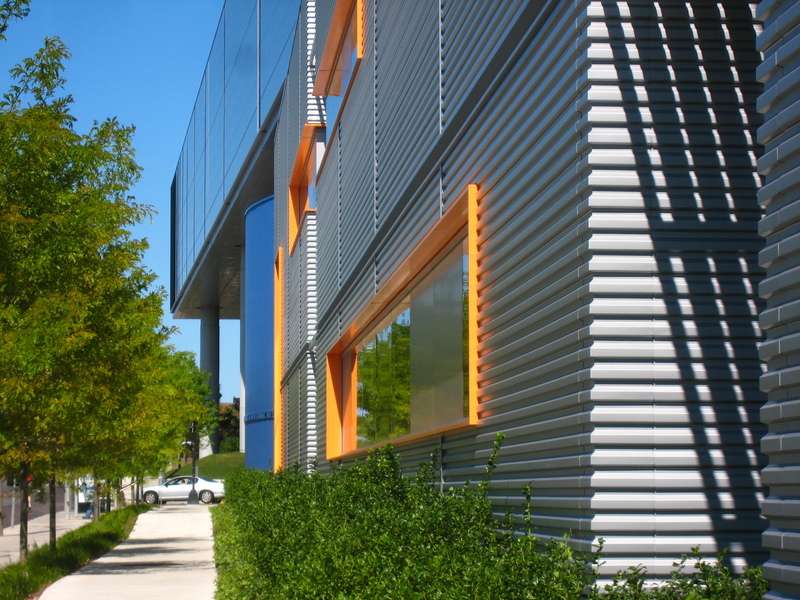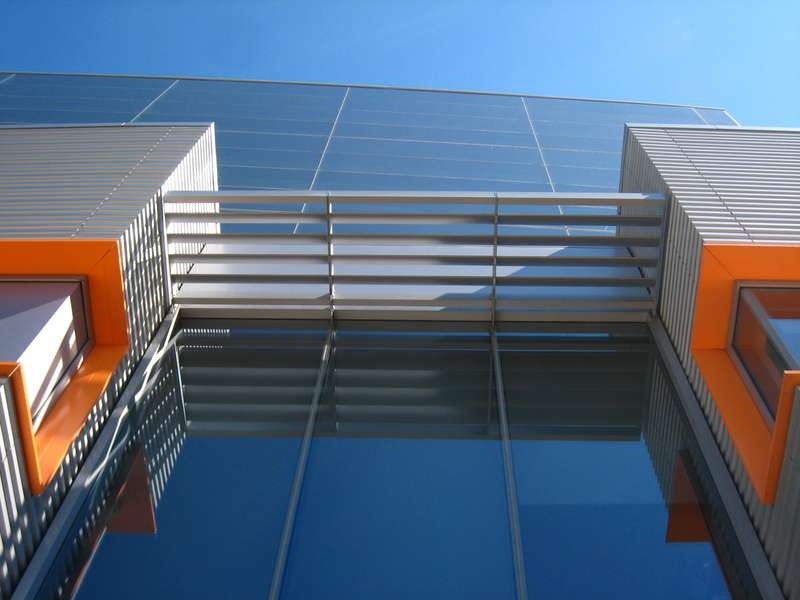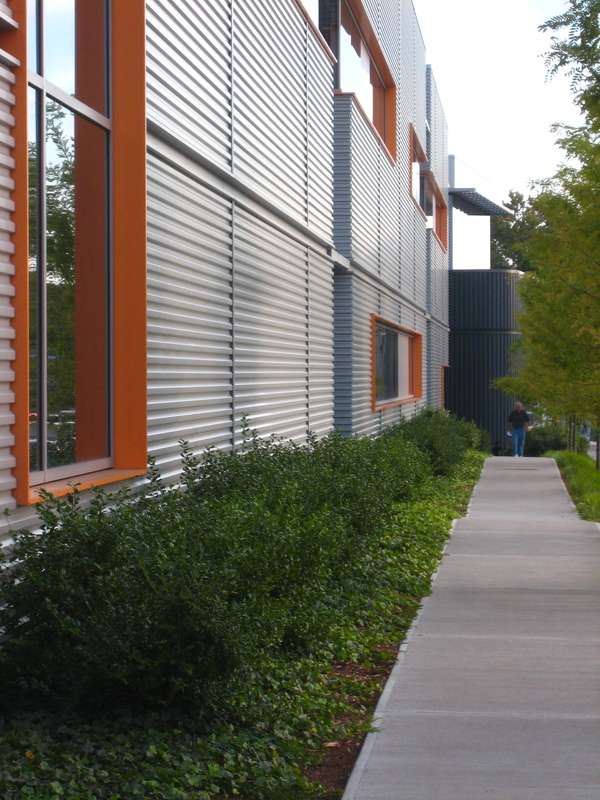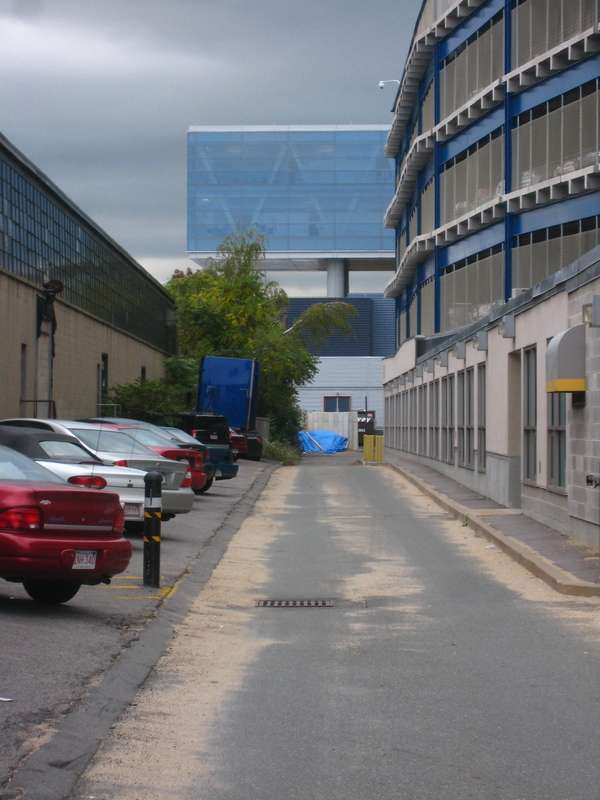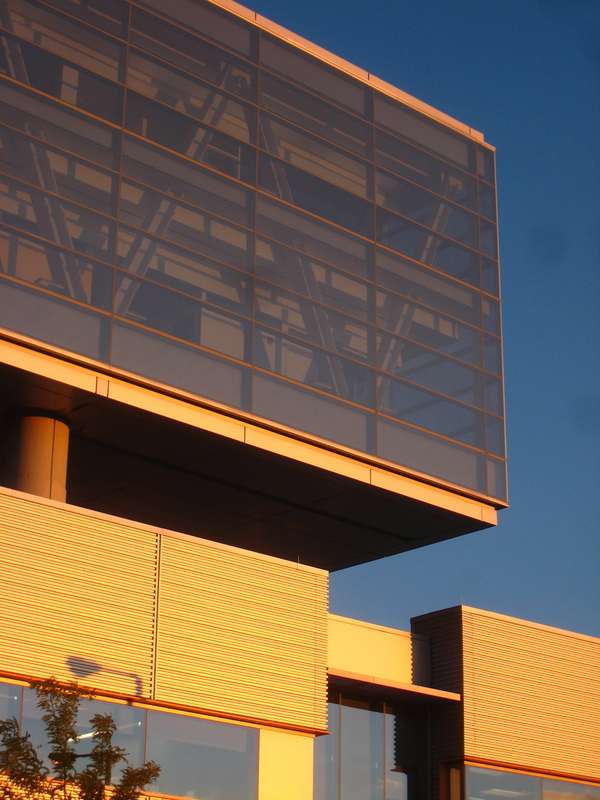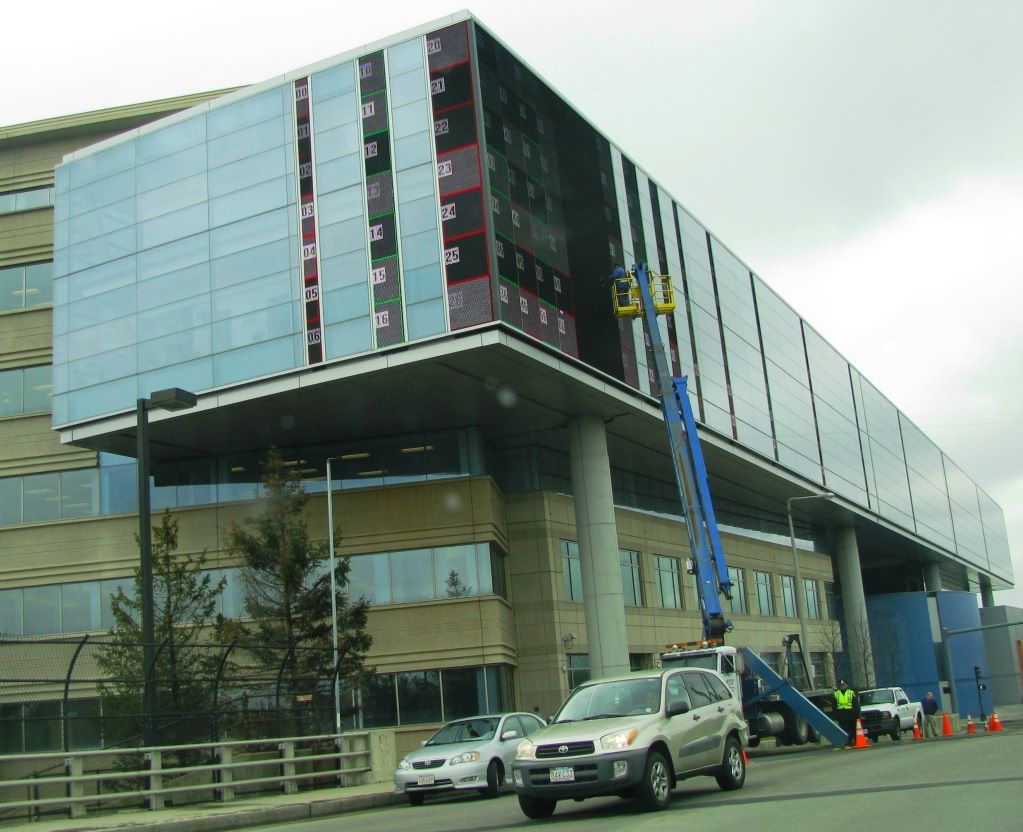WGBH files suit over repairs for video wall
By Eric Moskowitz
Globe Staff / November 13, 2008
First of its kind in the region, the state-of-the-art display covering the western wall of the new WGBH headquarters debuted amid fanfare last year, when it began beaming an ever-changing array of images - Dick Cheney, the Rev. Martin Luther King Jr., Curious George, close-ups of cactuses - to the half-a-million Boston-bound motorists who pass by it each week on the Massachusetts Turnpike.
But after generating lots of talk, and some distraction for passing motorists, the screen went dark five months ago.
WGBH, the public broadcaster responsible for the award-winning science program "NOVA," has been stymied by a technical glitch. The television and radio station turned off the 30-by-45-foot LED display in June after it carried a pockmarked image of Big Bird, the last in a series of pictures marred by dark spots, caused by diodes that switched off when they became too hot.
Now WGBH is suing the installer and manufacturer for breach of contract and failure to honor the warranty for the massive display, known as a digital mural, which was supposed to be visible for 1 1/2 miles. The public broadcaster contends that the two firms failed to properly design and install the display and have resisted requests for them to fix it, according to a suit filed Monday in Suffolk Superior Court.
The parties sued by WGBH know how to fix the display, which began malfunctioning soon after it was turned on in September 2007, said Lucy Sholley, director of marketing and promotion for WGBH. But she contends that they have not honored agreements to repair it or pay for repairs.
While seeking restitution through the court, WGBH will try to fix the screen on its own. "We hope to get it back in action at some point in the new year," Sholley said.
The screen, the region's first major LED display, is bigger than many billboards and about the size of the footprint of a typical suburban home. It is made up of diodes the size of a grain of rice that are embedded into panels on the side of the WGBH building and emit light in red, blue, and green. Together, the diodes are supposed to produce a dazzling range of colors and generate a bright, easily visible image.
WGBH has not disclosed the display's price beyond saying that it was a portion of the $85 million cost of building its headquarters and studio in Brighton, a cantilevered complex alongside the turnpike. The broadcaster did not disclose how much it is seeking in the lawsuit. No federal or state funds were used to construct the project, Sholley said.
Broadway National, a New York company also known as Broadway Neon, won the bid to install the multipanel display. Another New York firm, Mark IV Industries, was selected as the subcontractor to manufacture it, according to the lawsuit filed by WGBH Educational Foundation.
Turner Construction served as WGBH's general contractor but did not handle the LED display.
The suit alleges that Mark IV told WGBH in January that defective power supplies were the problem and purportedly replaced them, but malfunctioning continued. In June, Broadway and Mark IV agreed that the digital mural was failing because the temperature in the cavity between the display and the interior wall became too hot while operating, according to the suit.
Mark IV proposed an air-flow system to solve the problem and agreed to pay for design, engineering, and installation, which prompted WGBH to hire outside consultants at "substantial costs" to design that system, according to the suit. But Mark IV refused to pay, and both Broadway and Mark IV have resisted WGBH's calls for the companies to resolve the situation, the suit contends.
Broadway's president, William Paparella, said in an interview yesterday that he had not yet seen the lawsuit but believed it was largely a dispute between WGBH and Mark IV. He also called it a disagreement about payment that could be resolved out of court.
"There is no work that we performed on the sign that is being disputed, other than that we're connected to these people on paper," said Paparella, who identified his company as Broadway Neon Sign Corp., based in Ronkonkoma, N.Y.
Paparella likened the situation to buying a functioning TV - in this case manufactured by Luminator, a subsidiary of Mark IV Industries - that doesn't work in a particular home. He said Mark IV believes air-flow requirements for the display were not met by WGBH or its general contractor, Turner, while WGBH contends that Mark IV and Broadway are at fault.
A call seeking comment from Mark IV, based in Amherst, N.Y., was initially directed to Luminator, a corporate division based in Plano, Texas, but Luminator directed the call back to Mark IV. There, a corporate spokesman said he could not discuss the situation, given the lawsuit.
WGBH initially proposed the display to take advantage of its new location and raise its profile without offending motorists or violating WGBH's civic-minded tradition.
In order to win approval from the Boston Redevelopment Authority, WGBH agreed to several restrictions: no video, only pictures; no product advertising; minimal display of text (the call letters may accompany the photos for only part of the day); and the use of a low-power screensaver, a night-sky image, after 7 p.m.
The suit contends that the digital mural's problems have cost WGBH substantial time and money.
The suit also alleges that the dark display has left WGBH "unable to deliver its message to the public as intended."
At least one person was unmoved. Last week a blogger calling himself Buoso Donati Jr. said the dark screen meant that during his daily commute, he no longer contemplated how many pledges paid for the display. However, he wrote, "my life seems no less rich."
Eric Moskowitz can be reached at
emoskowitz@globe.com.
Link

